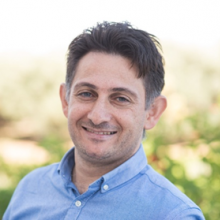Spinal cord injury (SCI) is a devastating pathology with dramatic lifetime consequences affecting thousands of people worldwide. Therefore, and considering the very limited regeneration ability of the central nervous system, in this project we propose to develop a neural tissue engineered scaffold capable of not only combining fibrous and porous topographic cues in order to mimic the morphology of the native spinal cord, but also potentiating the properties of graphene related materials (GRM) supported in a protein-rich decellularized matrix (adECM). In fact, the suggested 3D microenvironment should present electrical, chemical, mechanical and topographic features able to preserve neural cell survival and enhance neural progenitor cell differentiation towards neuronal and glial cells. Progress in this sense will contribute to a better understanding of the key factors controlling repair in damaged neural tissues and, consequently, bring insights into new therapeutic approaches for spinal cord recovery.
NeuroStimSpinal aims at developing a treatment for patients after spinal cord injury (SCI). SCI results in para- and tetraplegia caused by the partial or complete disruption of descending motor and ascending sensory neurons. It leads to devastating consequences such as sensory loss, paralysis and bowel/bladder dysfunctions. Different strategies have been proven at research level. However, today there is no effective SCI therapy that can entirely restore neuromotor deficits.
More information of the official website: https://www.neurostimspinal.eu/
General Information:
This project has received funding from the European Union’s Horizon 2020 research and innovation programme. It was submitted to the call H2020-FETOPEN-2018-2020, topic FETOPEN-01-2018-2019-2020, and its type of action is RIA.
Project Title: A Step Forward To Spinal Cord Injury Repair Using Innovative Stimulated Nanoengineered Scaffolds
Short Name: NeuroStimSpinal
Grant Agreement No: 829060
Coordinator: Paula Alexandrina de Aguiar Pereira Marques, TEMA, Mechanical Engineering Department, University de Aveiro, Portugal
Total Budget: EUR 3 518 962.50
Consortium Partners:
1. UNIVERSIDADE DE AVEIRO (UAVR), AVEIRO, Portugal
2. FUNDACION TECNALIA RESEARCH & INNOVATION (Tecnalia), DONOSTIA SAN SEBASTIAN, Spain
3. UNIVERSIDAD COMPLUTENSE DE MADRID (UCM), MADRID, Spain
4. STICHTING KATHOLIEKE UNIVERSITEIT (Radboudumc), NIJMEGEN, Netherlands
5. FOUNDATION FOR RESEARCH AND TECHNOLOGY HELLAS (FORTH), HERAKLION, Greece
6. GRAPHENEST SA (Graphenest), Paradela do Vouga, Portugal
7. STEMMATTERS, Biotecnologia e Medicina Regenerativa SA (Stemmatters), BARCO, Portugal
The long-term vision of this proposal is to contribute with a solution for spinal cord injury (SCI) which can lead to severe motor, sensory and autonomic dysfunction. Currently, there is no effective treatment for the SCI1 and people are forced to severe loss of autonomy. The long-term target or scientific breakthrough to be achieved in the proposal is to get the regeneration of the spinal cord (SC) nervous tissue by means of the implantation of an innovative biomaterial in the traumatic injury point that is able to promote the grow and reconnection of the ruptured nerves. This is a long-term ambitious objective and to achieve it, is to demonstrate at TRL4 (in vivo animal) the suitability of the innovative biomaterial developed by the consortium (at TRL2). The long term clinical goal of research in SCI is to support healing or regeneration of SC.
Funding






